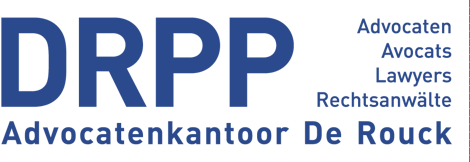
Product liability and asety
Product Liability and Safety
Bought inadequate and unsafe products: how is liability arranged and what are the rules for prevention:
1. As with many consumer-related matters, a separate regulation has been created under the impulse of Europe, which leads to the rapid determination of liability for inadequate products. Products are understood to mean “any physical good made available to a user (consumer) for payment, free of charge or as part of a service (or via the employer for the performance of his work)”.
There is a very broad interpretation of what can be regarded as physical good (e.g. stones of a terrace, windows of a building, parts of a vehicle, constituents of a medicine). Even an animal is included. (Note under Court of Appeal Antwerp 21 May 2012, NjW, eps 287, 125). Or software on a carrier (Court of Appeal Ghent, October 3, 2007, Computerr. 2008, nr 202).
A product is "inadequate" when it does not offer the safety that one can normally expect. This safety aspect is assessed broadly and generally.
2. Someone who buys an inadequate product will usually first address the person who sold it to him. When the purchaser is a consumer, he will be protected by the law (consumer law on purchase-sale) which accepts a presumption of defect and greatly facilitates the burden of proof.
When this term has expired (2 years) or the buyer is not a consumer, the product liability law sometimes offers a way out.
This special law provides for the possibility to hold the manufacturer of the end product (or part of the end product) or the importer within the European Community liable. If its identity is not apparent, this can also shift to its supplier (who does have a certain period to communicate the identity of the producer or the next in the chain).
3. The law of 25 February 1991 provides a very specific description when a product is inadequate.
This is particularly the case where this product does not provide the safety that might be expected, taking into account its presentation, reasonably foreseeable use or the time it is put into circulation. The injured party must then provide proof of the damage caused by the defect and of the causal link between the defect and the damage.
4. Because Europe is on the basis of this legislation (Council Directive 85/374/EEC of 25 July 1985), the ECJ's rulings do serve as guidelines for giving concrete substance to the evidence. For example, the ECJ accepted by judgment of 21 June 2017 (WXNY/Sanofi Pasteur, C-621/15, ECLI;EU:C;2017, 484) that this evidence could be provided by factual presumptions (cf. DCCR).( it concerned the death of a person as a result of the admission of a vaccine; a medical expert examination had been carried out and, according to the latter, the existence of a causal relationship was not established; however, there was a correlation between the admission and death, which the Court accepted as factual presumption).
5. There is also a specific regulation in the context of the safety of products , which is included in the Code of economic law and in which the government plays a major role.
Again, a European initiative.
In the event of a serious risk, the minister can withdraw products from the market (after prior notification).
He will usually ask beforehand whether the products are in a good condition and he can even order the producers to subject the products to decomposition and control in an independent laboratory within a specified period and at their expense.
The manufacturers are also obliged to provide the user with information that enables him to form an opinion on the risks inherent to the product.
If the producer is aware (or should know) that a certain product entails risks, he must immediately report this to a central reporting point.
